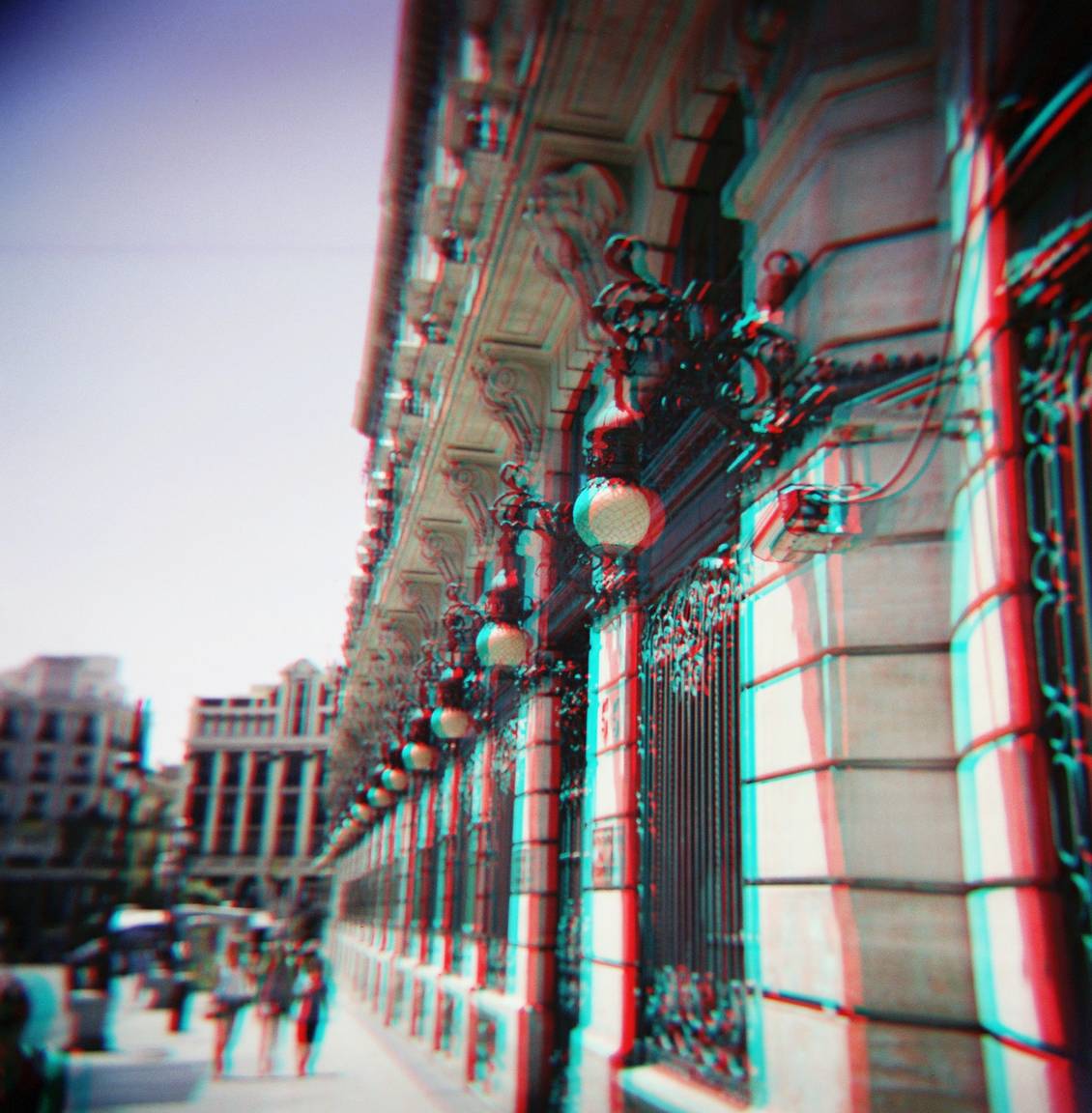Our Community LomoAmigojesushp shoots in 3D!
1 12 Share TweetHe describes himself as ‘a humble lover of the photography world and, of course, of the Lomo universe’. Today he’s going to tell us about his research in the three-dimensional side of lomographic image and he’s also going to show us some results. Get your 3D glasses on to be able to enjoy them!
To see the pics in this 3D article, get the typical red and blue glasses, you are going to be spaced out!

Hi Jesús, some of us already know you, but we would like you to briefly introduce yourself, tell us something we still don’t know about you!
Well, I’m a modest person with lots of hobbies, being photography among the main ones. 100% self-taught person, I love discovering things on my own and experimenting with new and unknown things. Maybe that is why I’m so attracted by analogue photography, since I totally control what I do.
Well, I started pretty late with analogue photography. Although I have always felt curious about photography, I never had either time or money to develop this hobby. As years went by, I began with it but we already were in the digital era.
Ok, let’s get to the point! Let’s start by the beginning, where did you get to this wonderful idea? 3D Lomo!
When I was around 10, TVE (Spanish State Television Corporation) broadcasted a season of 3D films, most of them westerns. To see it, you had to wear cardboard glasses with red and cyan glasses. This image is stuck in my mind; I enjoyed these films so much. I even keep the original glasses from that time, which had to be bought in newsstands (their copyright is © TVE, 1986). Through the years, and already in the analogue world, I have studied and read a lot about it to be able to reproduce this technology with modern means (either modern/digital or Lomography means). The result couldn’t be better: 3D images made with mid-19th Century techniques and with an amazing quality.
How was the process until you found the right method?
I have tried almost all the main analogue 3D techniques. Conclusions are as diverse as extensive. Some techniques give more depth by sacrificing the colour of the image, while with others you can get both depth and colour but it’s harder to visualize them… I have finally chosen stereograms (double images that need a visor to fuse them into a three-dimensional one) and, of course, anaglyph (red/cyan glasses).
Do you consider analogue three-dimensional research finished or is this just the beginning?
This is the top of the iceberg. Possibilities, just as with analogue photography, only are in your imagination. There are no limits. The amazing results and the uses you can make of this technique are awesome. The limit is the sky. There is just one problem, the same as always: it needs time, because once you have discovered it, you don’t wanna do any other thing…
How was the experience of giving a workshop on this cool technique? Will you do it again? Say yes, please!
Truth is, although I’m used to giving conferences and workshops because of my work, this experience was really nice and I was pleasantly surprised by the good atmosphere and the eagerness with which it was lived. Not always you are lucky to be surrounded by people who share your hobbies and availability to learn new things. I really liked it. Besides, I could finally meet and chat with some Lomographers that I only knew from their wonderful LomoHomes (juansupergen, carmengraphy,…) If I wanna do it again…? Whenever you like!
‘Avatar’ filmed with LomoKino in analogue 3D? What do you think? :p Would analogue cinema in 35mm with LomoKino be possible and also in three dimensions?
As I said before, there are no limits. The only problem (which actually isn’t a problem) is getting both LomoKino to have the same rhythm of shooting. For that, I can think of lots of solutions.
What are you up to now? Any other analogue experiment in mind? (If you can tell us, of course…)
I keep on experimenting. Now I am working with a couple of techniques, maturing them before announcing them and, of course, working in-depth with 3D. The last experiment I’ve been working in is a tripod that I’ve modified so it can hold two cameras at the same time, with a separation of up to 2 meters between them. This way I can give an unreal depth to the image… I promise to show you the results very soon…
Wow! We are so looking forward to seeing Jesús’ experiments! It was really nice to get to know you and your amazing research in three-dimensional analogue photography a bit more! We’ll follow your lomohome very closey, waiting for novelties.
2012-08-20 #people #lomography #diana #3d #lomoamigo #lomofriend #jesushp
























One Comment